
Why Adult Electric Bicycles Are Not Just Scaled-Up Kids’ Bikes
Introduction
Are you thinking about getting an electric bicycle? You might wonder if adult electric bicycles are just bigger versions of kids' e-bikes. This is a common question. The truth has many layers. From far away, both types might look similar - they have two wheels, handlebars, and a motor. But comparing an adult e-bike to a bigger kid's bike misses many important differences.
Adult electric bicycles are not just toys with more power. They are complex machines built from scratch to meet the many needs of adult riders. The differences go deep into how they're designed, their power systems, how strong they are, their safety features, and even their legal status.
In this article, we'll look at all these key differences. We'll see how purpose shapes design, how power and performance are made for adults, the strong construction needed for adult weights and long-term use, the strict safety and legal rules for adult electric bicycles, and the unique riding experience they offer.
Our point is clear: Adult electric bicycles are machines built for adult lives. They differ greatly from children's bicycles in their engineering, performance, and use. They are tools for travel, fitness, adventure, and accessibility - worlds apart from a child's play-focused e-bike.

Purpose-Driven Design for Adult Lifestyles vs. Child Development
The biggest difference between adult electric bicycles and kids' e-bikes is their purpose. This key difference affects every design choice, creating a huge gap in their design, parts, and abilities. One is built for real-world use and adult recreation; the other is made for play, learning, and gentle introduction to powered movement.
Kids' E-Bikes: Focus on Fun, Learning, and Lower Stakes
These bikes have simple controls, much lower top speeds, and limited motor power. They're meant for short rides in safe places like parks, backyards, or quiet streets. They focus on building confidence and having fun with low risk. Power delivery is gentle to prevent sudden jumps that could scare a young rider.
Adult Electric Bicycles: Engineered for Real-World Demands
In contrast, adult electric bicycles are built to meet the complex needs of adult life and different riding goals. They serve many purposes.
For commuters, an adult e-bike must provide reliable daily transportation. It needs enough range for a round trip, protection from weather, and often space to carry work items like a laptop bag or clothes. It must be durable for daily use.
For fitness fans and recreational riders, adult electric bicycles offer the performance needed for challenging terrain, long-distance tours, and maintaining exercise levels. They let riders explore further and push limits, even with steep hills or headwinds.
As utility vehicles, adult e-bikes can replace car trips for errands, carry groceries, or even transport children in approved carriers. They provide a practical, green solution for daily tasks. They also offer mobility help, allowing people with different physical abilities to enjoy cycling freedom.
We see this shift in transportation habits often. Many studies show more adults using e-bikes for daily commutes, with some surveys showing average one-way commute distances of 5-15 miles or more. Kids' e-bikes simply can't do this.
Power and Performance: The Heart of an Adult E-Bike
The power and performance features are where adult electric bicycles really stand apart from kids' models. These systems are carefully engineered to handle adult weights, varying loads, tough terrain, and practical speeds in real traffic. Understanding these differences helps show why adult electric bicycles are in their own class.
Motors: More Than Just a Spin – Sophistication and Strength
The motor in an adult electric bicycle is not just a simple helper; it's a complex piece of engineering made for strength and responsive power. Adult e-bikes usually have one of two main motor types: hub motors (in the wheel) or mid-drive motors (near the pedals).
Many prefer mid-drive motors for their efficiency, use of bike gears, and natural feel, thanks to advanced torque sensors. These sensors measure your pedaling effort and give matching help, making the power feel like an extension of your own strength. Hub motors, while sometimes simpler, work well for steady speed on flat ground.
Power output is much higher in adult electric bicycles. Normal motor ratings range from 250W to 750W, sometimes more, designed for steady performance with an adult rider plus cargo. Kids' e-bike motors are simpler, much weaker (often 100W-250W, or less for very young children), and provide basic help that's often less smooth than the intuitive feel from a quality adult e-bike.
Batteries: The Lifeline for Serious Riding
The battery powers an adult electric bicycle and determines how far it can go. Battery capacity is much larger for adult e-bikes. You'll usually see capacities from 400Wh to over 1000Wh, letting riders travel long distances.
These batteries use advanced lithium-ion technology and sophisticated management systems that monitor temperature, balance charge, prevent overcharging, and extend battery life. Reliability is crucial for adults who depend on their e-bikes.
Kids' e-bike batteries are smaller with lower capacities, matching their shorter ride times and lower power needs. Their charging systems are generally simpler too. The power from robust batteries in adult electric bicycles lets riders cover more ground and climb hills with less effort.
Speed and Range: Meeting Adult Expectations
Adult electric bicycles offer practical speeds and ranges that adult riders need. Depending on local laws and e-bike class, adult e-bikes typically provide help up to 20 mph (Class 1 and 2) or 28 mph (Class 3).
Ranges vary based on battery size, motor efficiency, terrain, rider weight, and power level, but adult electric bicycles commonly offer ranges from 30 to 60 miles. Some touring models exceed 100 miles on one charge. This makes them viable for substantial commutes, long recreational rides, or multi-day tours.
Kids' e-bikes are limited to much lower speeds – often 5-15 mph – and their ranges are much shorter, suited for play sessions rather than real travel.
To show these differences clearly:
| Feature | Typical Kids' E-Bike | Typical Adult E-Bike |
| Motor Power (Avg.) | 50W - 250W | 250W - 750W+ |
| Battery Capacity (Avg.) | 50Wh - 200Wh | 400Wh - 1000Wh+ |
| Max Assisted Speed (Avg.) | 5 mph - 15 mph | 20 mph - 28 mph |
| Typical Range | 5 - 15 miles | 30 - 100+ miles |
These figures highlight the huge jump in capability that defines adult electric bicycles.
Built for Adult Loads & Durability: Frame, Components, and Construction
One of the most important differences is the sturdiness of adult electric bicycles. They aren't just bigger versions of children's bikes. They are completely engineered systems designed to safely support adult weights, handle higher speeds, and last through real-world use day after day.
This is a key reason why adult e-bikes are different – they solve a much harder engineering challenge.
Frame Engineering
The frame of an adult electric bicycle is its backbone. It uses higher-grade aluminum alloys (like 6061 or 7005), known for strength, light weight, and resistance to fatigue. Some high-performance models even use carbon fiber to reduce weight further.
Frame geometry is carefully designed for adult comfort, providing comfort on long rides and stability at higher speeds. Different riding styles need specific geometries – upright for commuting, aggressive for mountain biking, or relaxed for cruising. These frames have special reinforcements to hold the motor and battery securely, ensuring strength and balanced weight.
Kids' bike frames typically use simpler steel or basic aluminum, with geometry focused on learning balance at low speeds. They aren't designed for heavy loads, forces from powerful motors, or constant stress that adult e-bike frames must handle.
Braking Systems
With increased weight and higher speeds, the braking system on an adult electric bicycle is critical for safety. More weight and speed mean more energy to stop.
This is why hydraulic disc brakes are standard on most quality adult electric bicycles. They offer better stopping power, control, and consistent performance in all weather conditions compared to simpler brakes. Larger brake rotors (180mm or 203mm) help cool during long braking and provide more stopping force.
Kids' e-bikes, operating at lower speeds with lighter loads, typically use simpler brakes like V-brakes or coaster brakes. These work for their intended use but would be dangerous on an adult e-bike.
Drivetrain and Gearing
The drivetrain on an adult electric bicycle must handle both the rider's effort and the strong torque from the electric motor. Components are often specifically designed for e-bike use, with stronger chains and more durable gears. A wide gear range is essential for adult electric bicycles, allowing riders to climb steep hills and maintain comfortable pedaling at various speeds. This means multi-speed systems with 7 to 12 gears are common.
Kids' bikes often have single-speed drivetrains or very basic gearing with a limited range, suited for simpler terrain and lower power.
Wheels and Tires
Wheels on adult electric bicycles are built for strength. They have stronger rims with double-wall construction and more or thicker spokes to support the extra weight and forces from motor torque.
Tires are also crucial, chosen for the bike's intended use. Commuter e-bikes may have puncture-resistant tires with road-friendly tread, while electric mountain bikes have knobby tires for off-road grip. The tires are rated for higher loads and speeds than standard bicycle tires.
Suspension Systems
Many adult electric bicycles, especially electric mountain bikes, hybrid models, and cruisers, have sophisticated suspension systems. These range from front forks to full-suspension designs. These systems are tuned for adult weights and absorb impacts from rough terrain, improving comfort, control, and traction at higher speeds or on uneven surfaces. The travel and damping are engineered for performance.
Kids' bikes, if they have suspension, typically feature very basic systems that offer minimal real benefit. This complete re-engineering of every critical component shows that adult electric bicycles are entirely distinct, high-performance machines.
Safety, Legality, and Responsibility
Beyond mechanical differences, adult electric bicycles operate within distinct safety standards, legal classifications, and rider responsibilities. This clearly separates them as vehicles designed for traffic, not just toys. Understanding this aspect is vital for any potential adult e-bike rider.
These safety and legal requirements mark them as machines for mature users.
Understanding E-Bike Classifications (Class 1, 2, 3)
In many regions, including the United States and parts of Europe, adult electric bicycles fall into specific classes: Class 1, Class 2, and Class 3. These classifications determine how the motor provides assistance and the maximum assisted speed.
-
Class 1: The motor helps only when pedaling and stops assistance at 20 mph.
-
Class 2: The motor can be activated by a throttle (no pedaling needed) and stops assistance at 20 mph.
-
Class 3: The motor helps only when pedaling and can assist up to 28 mph. Class 3 e-bikes typically don't have a throttle.
These classifications matter because they determine where you can legally ride. Different classes have different rules for trail access, bike path use, and licensing.
Kids' e-bikes often fall outside these formal classifications or exist in a very low-power category, sometimes treated more like toys with fewer regulations than adult electric bicycles.
Legal Operating Requirements: Rules of the Road
Operating adult electric bicycles comes with specific requirements that usually don't apply to children's bikes. There are often age restrictions; for example, riders might need to be 16 or older to ride a Class 3 e-bike in some places.
Helmet laws can be stricter for adult e-bike riders due to higher speeds. Rules also dictate where adult electric bicycles can be ridden. While some may be allowed on multi-use paths, faster Class 3 e-bikes are often restricted to bike lanes or roads. These rules vary by location.
In contrast, kids' e-bikes are generally allowed in more places like sidewalks and parks, with fewer restrictions. Many new adult e-bike riders are surprised to learn that Class 3 e-bikes often can't use the same paths where children might ride a regular bike or low-power kids' e-bike. Always check your local laws before riding.
Built-in Safety Features for Adult Riders
As vehicles for road use, adult electric bicycles typically have more robust safety features. These often include powerful headlights and taillights (sometimes with brake light function) for visibility.
Effective reflectors are standard, and a bell or horn is usually required or recommended. Many adult electric bicycles have a motor cut-off sensor in the brake levers; when you brake, the motor assistance stops immediately. Sturdier kickstands designed for the heavier bike weight are common. Some high-end models now feature advanced safety technology like anti-lock braking systems.
The "Not a Toy" Responsibility
The increased speed, weight, and power of adult electric bicycles require greater rider awareness and responsibility. These are not toys, and riding them requires respecting traffic laws and considering other road users.
Understanding how to safely interact with pedestrians, traditional cyclists, and vehicles is crucial. The physics make this clear: an adult electric bicycle at 20 mph or more, weighing 250-300 pounds with rider, has significant energy – much more than a child on a small, slow e-bike. This means reaction times, braking distances, and potential crash consequences are all greater. Responsible riding and understanding your machine's capabilities are essential parts of adult e-biking.
Tailored for Adult Comfort, Utility, and Thrills
The result of sophisticated design, robust engineering, and purpose-built power systems is a riding experience on adult electric bicycles that is far different from and better for adult needs than any child's bike. This experience suits adult bodies, diverse uses, and even thrilling adventures.
It's about more than just transportation; it's about how you feel while riding.
Ergonomics and Comfort for Adult Bodies
Adult electric bicycles are designed with adult ergonomics in mind. Adjustable parts like saddles, handlebars, and stems let riders fine-tune the fit to their body and preferred riding position. This adjustability prevents strain and discomfort on longer rides.
Frame geometry is engineered for sustained comfort, whether upright for city riding or more forward for performance. Suspension systems, when present, are tuned for adult weights, smoothing out bumps from the road or trail. Riding a well-fitted adult electric bicycle after trying a too-small or overly simple bike is eye-opening. Proper saddle height and handlebar reach means less strain on your back, shoulders, and wrists, making a 10-mile commute feel energizing rather than tiring.
Handling and Stability at Speed
The design features of adult electric bicycles – stiff frames, quality components, and appropriate tires – provide confident handling. This stability works not just for cruising but also for control at higher speeds and when carrying loads like groceries or a child in an approved seat.
Different motor types affect the experience too. A well-tuned mid-drive motor with a torque sensor offers smooth power that blends with your pedaling. This feels like having extra strength rather than being pushed by a motor, improving control and enjoyment.
Versatility for Adult Pursuits
The tailored experience of an adult electric bicycle enables versatility for various adult activities. For commuting in traffic, quick acceleration from stops and keeping pace with urban flow improves safety and confidence.
For touring and long-distance riding, the extended range, comfort-focused design, and reliable power let riders explore further and tackle more ambitious routes. Off-road, the power, robust suspension, and durability of electric mountain bikes open up new exploration possibilities.
Beyond recreation and commuting, these bikes excel at practical tasks. Carrying cargo, whether groceries or camping gear (using appropriate racks or trailers), becomes feasible and enjoyable. Importantly, adult electric bicycles provide an accessibility solution, enabling people with physical limitations, recovering from injuries, or wanting to manage exertion to enjoy cycling benefits. This level of thoughtful, tailored experience simply doesn't exist in children's bikes.

Why Understanding These Differences Matters for Adult Buyers
Recognizing the fundamental differences between adult electric bicycles and children's models is crucial when making a purchase. This knowledge helps you select a machine truly suited to your adult needs, ensuring satisfaction, safety, and long-term value.
Avoiding the Pitfalls of Underpowered or Undersized Options
The e-bike market is vast, and sometimes lower prices might lead you toward simpler, less robust electric bikes. While some may appear "adult-sized," their internal components, power, and durability might be closer to youth models, or inadequate for consistent adult use.
Choosing an underpowered or undersized option can cause frustration: insufficient range, difficulty with hills, premature wear, and potentially an unsafe experience if the bike can't handle adult weights and speeds reliably. An adult electric bicycle is an investment in performance and durability.
Matching the Bike to Your Adult Needs
The key is matching the adult electric bicycle to your main intended use. Are you primarily a city commuter needing reliability and cargo capacity? A weekend warrior wanting to conquer trails? Or perhaps seeking a comfortable way to enjoy leisure rides and run errands?
Each purpose is best served by different types and specifications of adult electric bicycles. Consider your priorities: range, power, terrain capability, comfort features, and cargo options. Try to test ride several models if possible and seek advice from reputable e-bike retailers. Their expertise can guide you to an adult electric bicycle that fits both your body and riding goals, ensuring your investment brings miles of enjoyment and utility.
Conclusion
It should now be clear that adult electric bicycles are far more than scaled-up versions of kids' bikes. They represent a significant leap in engineering, capability, and purpose, carefully designed for the complexities and demands of adult life.
From their intelligent design focused on real-world utility and recreation, to their significantly more powerful motors and batteries, adult electric bicycles are in a league of their own. Their robust construction, with high-strength frames and durable components, is engineered for adult weights and rigorous use.
The distinct legal and safety frameworks for adult electric bicycles, including classifications and operational rules, highlight their status as serious vehicles. This, combined with a riding experience tailored for adult comfort and performance, separates them entirely from play-oriented children's e-bikes.
When considering an adult electric bicycle, you're looking at a sophisticated machine engineered for mature users – a versatile tool ready to enhance your commute, expand your recreation, or provide valuable mobility assistance. They are, without question, in a different class.
FAQs
1. Why are adult electric bicycles more expensive than kids' e-bikes?
Adult electric bicycles cost more because they feature higher-quality components, more powerful motors (250-750W vs 50-250W), larger batteries (400-1000Wh), sophisticated safety systems, and frames engineered for adult weights and long-term durability.
2. What makes adult electric bicycles different from children's models in terms of performance?
Adult electric bicycles offer significantly higher speeds (20-28mph vs 5-15mph), longer ranges (30-100+ miles vs 5-15 miles), more advanced motor systems with torque sensors, and sophisticated power management designed for various terrains and riding conditions.
3. Are there special legal requirements for riding adult electric bicycles in 2025?
Yes, adult electric bicycles typically fall under specific classifications (Class 1, 2, or 3) that determine where they can be ridden, age restrictions (often 16+ for Class 3), helmet requirements, and whether they're allowed on certain paths or roads.
4. How do I choose the right adult electric bicycle for my needs?
Select an adult electric bicycle based on your primary use (commuting, recreation, off-road), desired range and speed, terrain in your area, comfort preferences, and any cargo needs. Test riding different models is highly recommended.
5. Can adult electric bicycles accommodate different riding styles and body types?
Yes, adult electric bicycles are designed with adjustable components (saddles, handlebars, stems), varied frame geometries for different riding positions, and suspension systems tuned for adult weights, ensuring comfort for diverse body types and riding preferences.






























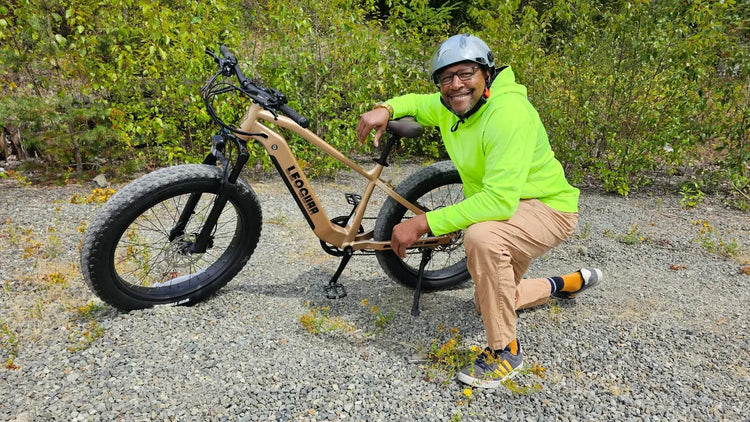
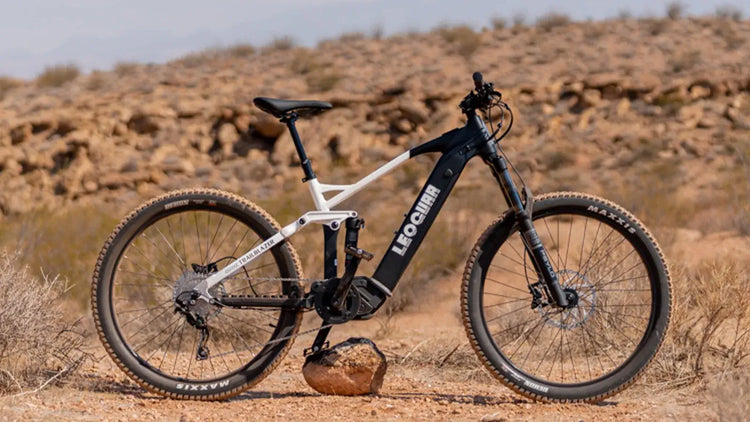
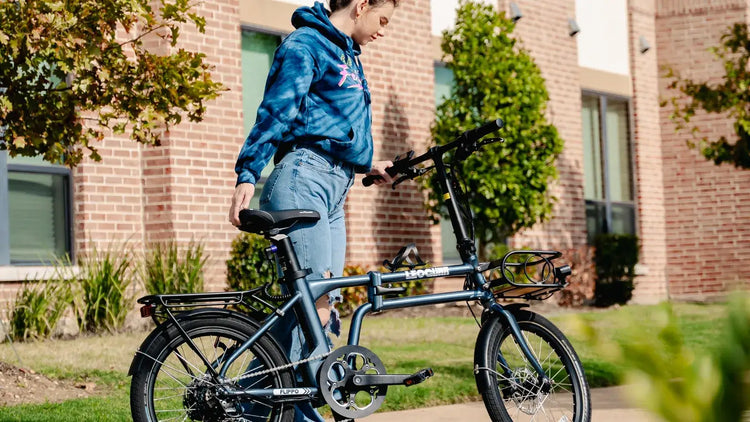

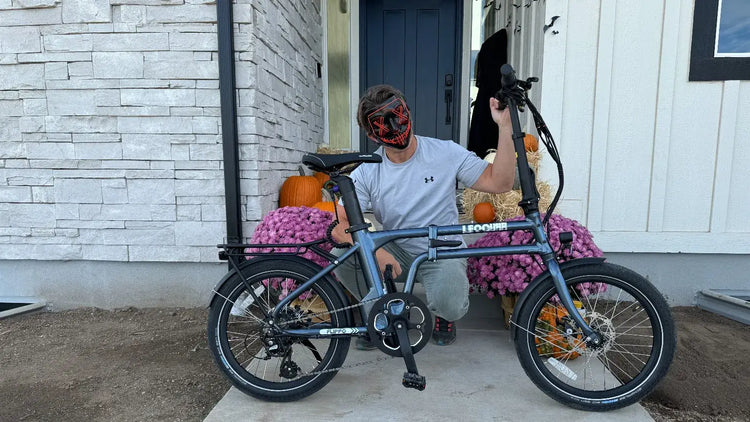
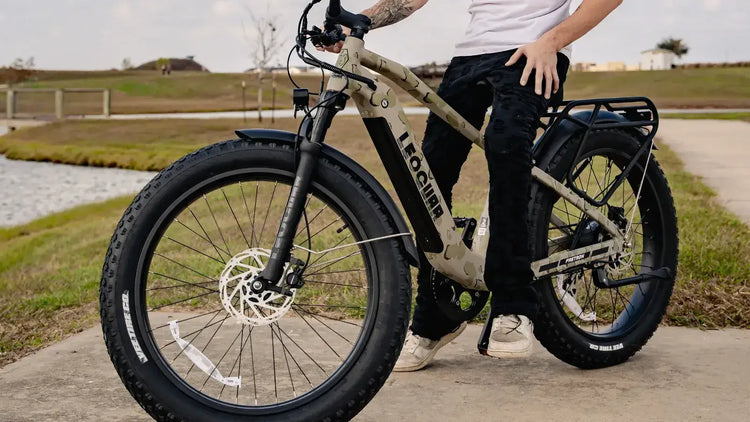


Leave a comment